When Robots Take Over – Naw, just kidding

Just kidding! Naw, we are not kidding about the robot takeover: I’m kidding about the “when” – as though it is not a done deal already, a thorough fait accompli, folks. No? They are running the world. Who do you think keeps the electricity steady, Eddy? Who makes sure just the right amount of potable water flows at the right pressure through the mains, Gaines? Who lands your jet aircraft, Taft? Who makes it possible for us to share these poignant fables on the web, Webb?
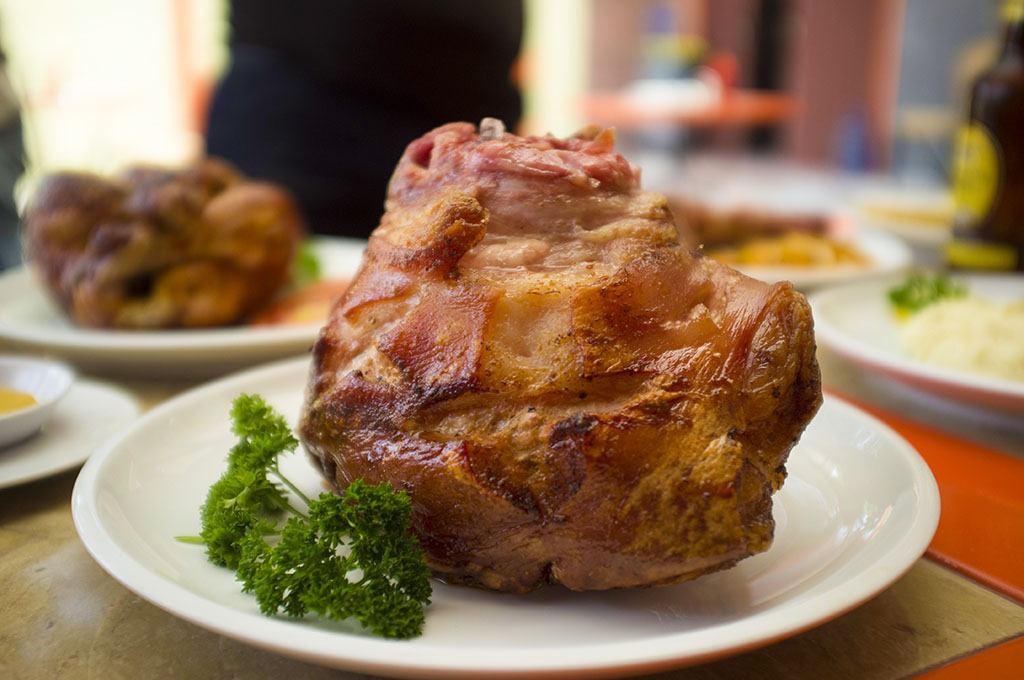
You-no-thinka-internet-she-‘robot’? Let’s define our terms, to start off with. But first a prodigious pork knuckle, lubricated down the gullet with a stein of the finest Euro-Indo beer, Lear. So what [BURP] is [CRUNCH] a robot?
Robot, any automatically operated machine that replaces human effort, though it may not resemble human beings in appearance or perform functions in a humanlike manner. By extension, robotics is the engineering discipline dealing with the design, construction, and operation of robots.


In an era before robots, the public was amused by automatons, mechanical creatures or dioramas crudely imitating actual living ones.

The Bowes Museum in County Durham has lent the Silver Swan, created in 1773, which is controlled by three clockwork mechanisms allowing it to swim, move and preen as if it was catching fish.
Pretty creepy to see these days, but at one time objects of fascination. “New Wave” technology has always exerted a sinister lure …

Alfred Abel and Rudolf Klein-Rogge say ‘Guten Tag’ to Sexy-Robo Brigitte Helm with the nice symmetrical tits, in Metropolis (1927)
And of course moving pictures. The robot has been a faithful figure in the bioscop, all the way from Metropolis to the evil killer Hal in 2001 to humanoids-who-turn-out-to-be-robots (Alien).
There is even a ‘Robot Hall of Fame’, established in 2003 by the School of Computer Science at Carnegie Mellon University in Pittsburgh, Pennsylvania.
Kids today may well consider a course of study in Robotics. In a time of steadily accelerating social change (and upheaval) the choice of a career can be a daunting matter. Consider the early 1990s, when the reach of computer technology was still relatively limited. Computer Graphics (CG) effects of that era, like the “Liquid Metal” shape-shifting of robo-villain Robert Patrick, the T-1000 in Terminator 2, look quaint these days, while at that time they were multi-million-dollar efforts produced by expert teams on exotic, highly-specialized hardware. But that was 1990: today the average teen-age nerd can make fancier CG on a personal computer with off-the-shelf software.
And the two robots, jousting: Arnold and his updated version, the reformed robot and the evil one: there’s our blog-theme for the week. “Robots – can’t live with them, can’t live without them”.

In western culture, robots are more often than not wicked creatures, who turn on their makers. Think of the not-so-handsome Frankenstein’s Monster, pieced together from corpses “borrowed” from a cemetery and brought to life with electricity (I know, I know: bad science). He eventually sought revenge on his master.

Time and again, the awe, pleasure and fear, all at once. But you really don’t have to have a cutesy humanoid robot walking down stairs (something a four-year-old can do, and they don’t cost a million dollars). Let’s take a look at some of the more urgent and relevant applications of robotics – like going to war.
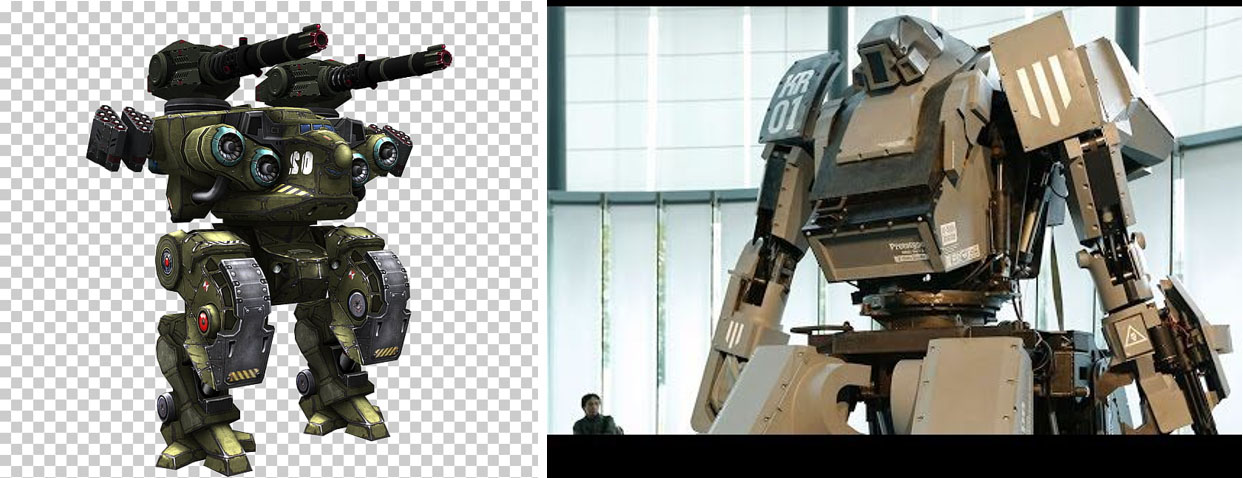
Robots can perform tasks in combat much quicker, and cheaper, repetitively following orders precisely time and again, in a way no human soldier can do. But of course the rub there is that the robot may, sooner or later, get it into its very smart “head” that it doesn’t need to take orders from meat puppets. It might even decide that its finest course of action is to eliminate humanity. Thus, “Skynet” in Terminator.
It’s quite a conundrum, really. Exerting human control over a robot warrior is fatally slower than allowing a computer to make moment-to-moment decisions. But what if those decisions turn out to be less than optimal for humans … say, airline passengers:
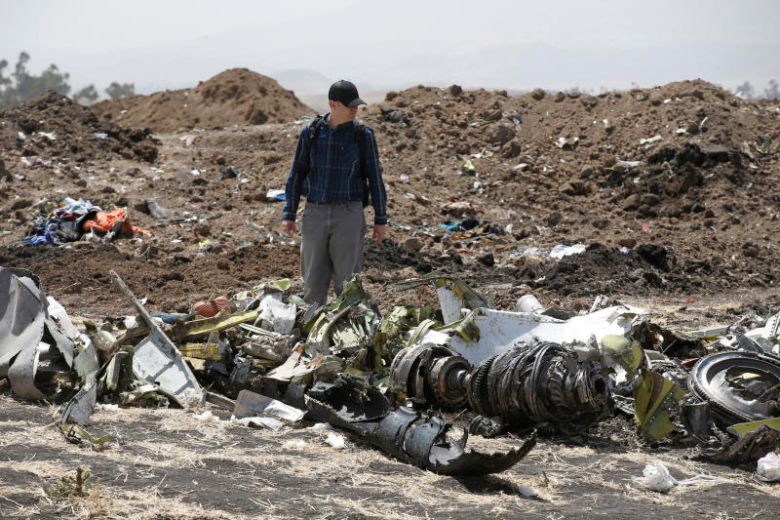
Well consumer, are you ready for an era of “robo-food” (assuming you were not unlucky enough to be on one of those Boeing 737 Max 800 flights where a saucy computer told the flight crew “…I know better, and I’m taking control…”)?
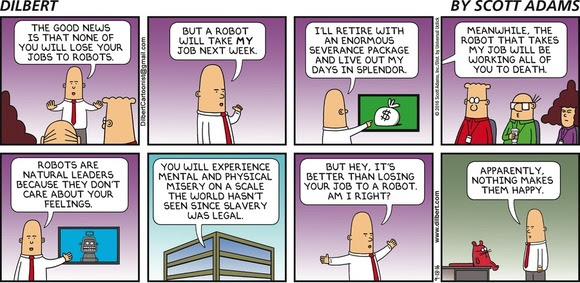
Robots in Management? CEOs are looking worried.

Robotics can certainly save lives – and are making huge inroads into medicine. Your child in Copenhagen needs a specialized operation that only one doctor in Shanghai, can do? Can do! Robo-surgery.

And what about getting that fresh milk from your dairy herd, or better yet prize million-dollar semen from your angry bull (who’d really, really prefer to be ejaculating that seed pleasurably into a lady cow’s rear end)? A robot cum-pump, naturally.
RESTAURANT ROBOTS
Robots in restaurants, also called automated restaurants, are making the food industry safer, personalized and more efficient. Robots can be found throughout the restaurant industry flipping burgers to specific preferences, pouring the perfect cup of coffee or even preparing fast-casual “bowled” meals.

More unemployment? Yep, most likely. (But not for robots: they even have their own talent agency.) More efficiency? For sure? Better service and a personal touch? No way.
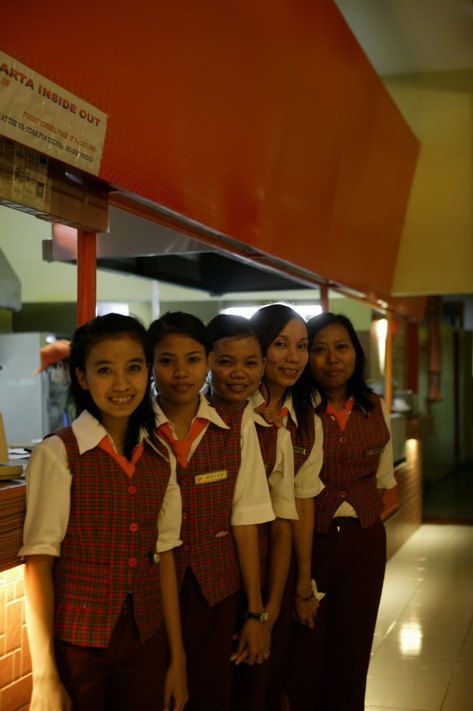
Only the personalized human touch, as evident in the magnificent fare and streamlined service at Ya Udah Bistro, will get you that. Freshly-prepared Euro-Asian cuisine, from the best ingredients (not cooked far away, frozen then warmed over – UGH), delivered hot to your table, a fine array of firewater and sweet drinks, and any special items you might want to add (which a robot will not be programmed to consider) – just ask the waitress with a smile. And you’ll get a smile right back.

And not a robo-smile either.

Bistro food is so great that “You’ll be back”…




